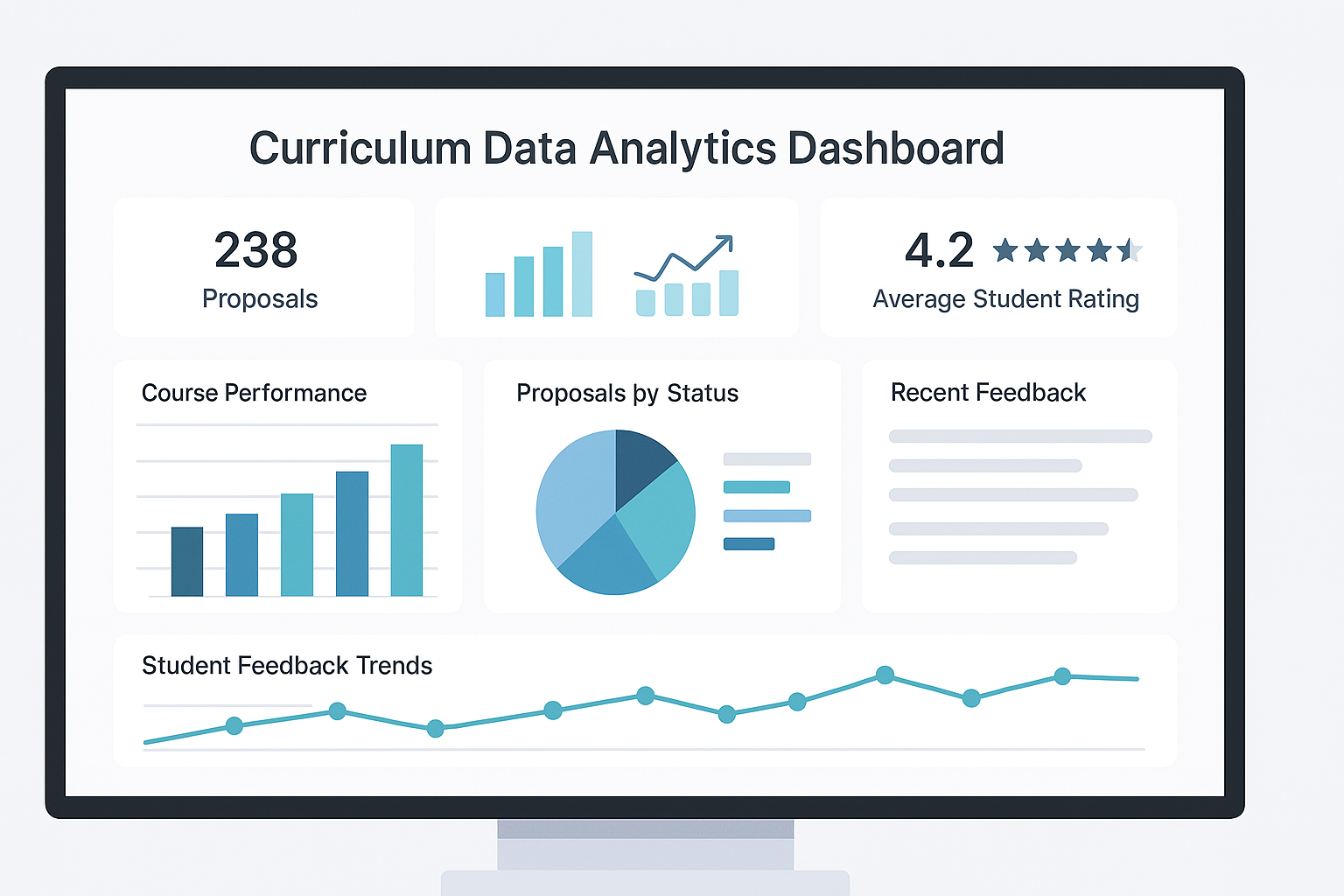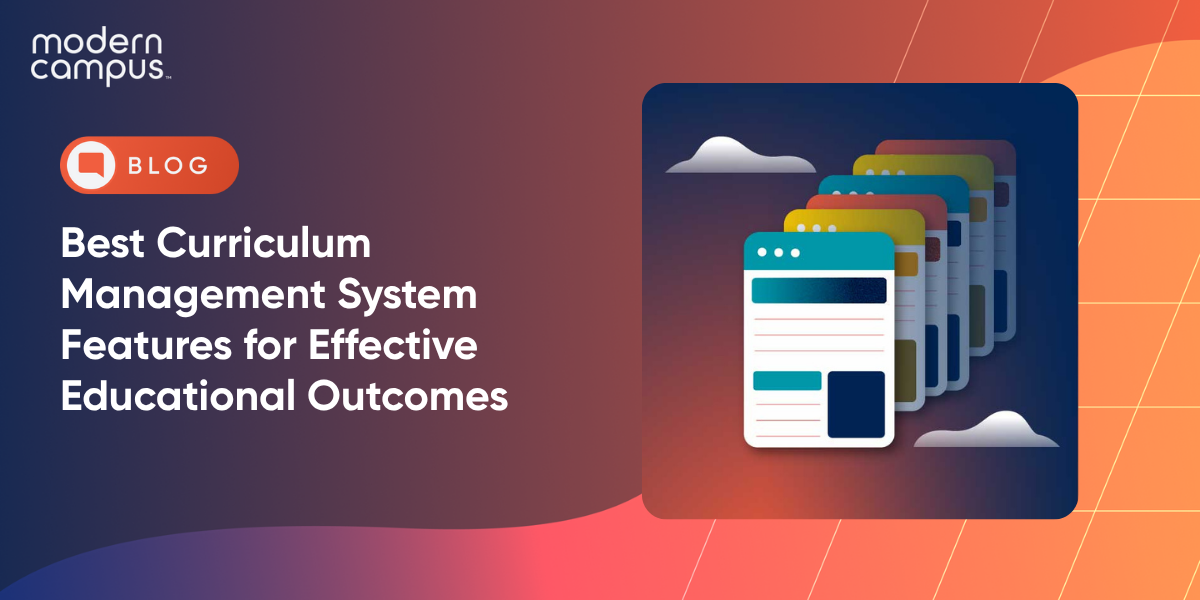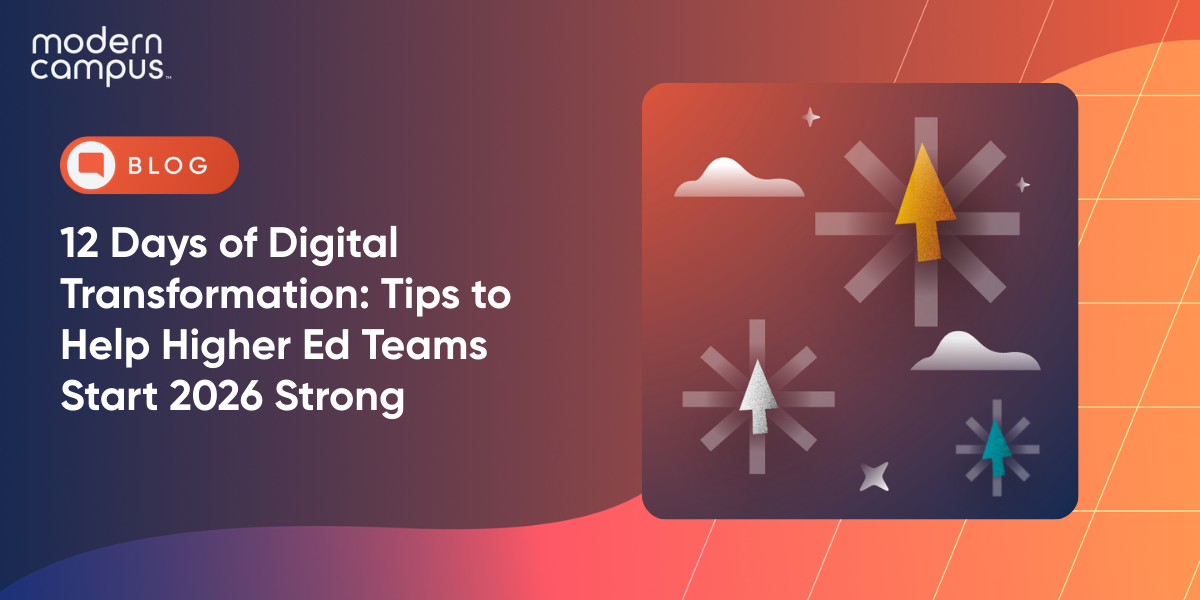Best Curriculum Management System Features for Effective Educational Outcomes
Institutions face growing pressure to ensure that their academic offerings align with real-world outcomes. A recent report from Inside Higher Ed found a notable misalignment between alternative credentials offered by schools and the skills employers actually seek. This gap highlights a broader issue within curriculum development: without tools to track, assess and adapt offerings, institutions risk falling behind student expectations and workforce needs.
Curriculum management systems help institutions stay current and responsive. These platforms streamline the workflows involved in curriculum changes, allowing administrators, faculty and other stakeholders to collaborate in real time. With the right course catalog software, schools can create up-to-date, transparent and engaging academic experiences that foster student success.
Whether building new programs or updating existing ones, institutions need modern systems that prioritize flexibility, integration and student outcomes from the start.
Must-Have Features in Curriculum Management Systems
To achieve effective educational outcomes, institutions need curriculum management systems that go beyond basic organization. The most valuable platforms offer built-in flexibility, seamless integration and collaborative tools that align curriculum with strategic goals. These systems simplify complex workflows, promote transparency across departments and enable fast, confident decision-making around curriculum changes.
Intuitive Workflow Automation for Curricular Changes
Managing curricular changes often involves multiple stakeholders, including faculty, department chairs and academic administrators. Without a structured system, these updates can stall or become mired in version control issues. A strong curriculum management platform automates and streamlines approvals, moving requests from submission to final sign-off with built-in workflows, email triggers and role-based permissions.
Automation reduces bottlenecks and ensures that every member of the review process is in sync. With features like comments, version history and real-time status tracking, users can provide input at key stages and stay up to date without digging through endless emails or outdated files.

Centralized and Collaborative Curriculum Development
The best curriculum management software brings all stakeholders together in one system. Faculty, curriculum committees and administrators can collaborate on new course proposals, program revisions and assessment strategies. You don't have to rely on siloed documents or manual tracking. Centralized tools create space for meaningful input while preserving a single source of truth across departments.
Collaboration improves the quality of curriculum development and fosters faculty engagement. With shared access to forms, reports and key deadlines, everyone involved can contribute more effectively and stay aligned with institutional goals.
Compliance-Ready Approval Tracking
Academic institutions must adhere to rigorous accreditation and compliance standards. A curriculum management system with robust tracking and documentation features can ease this burden. Every step of the process, from proposal to implementation, is recorded, time-stamped and auditable, reducing the risk of oversight and ensuring the institution remains in good standing.
Having detailed records readily available simplifies internal audits and supports transparent reporting. Institutions can track who approved what and when, providing a reliable record of compliance for both internal and external stakeholders.
Seamless Integration with Catalog and Student Information Systems
Curriculum updates need to be reflected everywhere students and staff engage with academic content. Seamless integration with course catalog software and student information systems (SIS) ensures that newly approved changes go live accurately and on time across platforms.
Catalog updates, scheduling changes and program details can sync automatically with this level of integration, reducing manual entry and human error. Students get the most up-to-date course information, while staff save time and ensure consistency throughout the system.
How Curriculum Management Software Enhances Efficiency and Innovation
Curriculum management software empowers institutions to move faster and respond smarter. By removing manual roadblocks and enabling better data usage, the right system helps academic teams focus on innovation rather than administration. The result is more agile programs, quicker time to market and offerings that stay relevant.
Reducing Time-to-Launch for New Programs
Launching a new course or program can take months or even years when processes rely on spreadsheets, email chains and disconnected systems. With curriculum management software, teams can design, review and approve new offerings within one unified workflow. Built-in automation reduces administrative delays and keeps every team member on track with notifications and real-time updates.
When responding to shifting industry demands or emerging student interests, schools that can bring fresh topics to market quickly are more likely to attract learners and remain competitive.
Enabling Data-Driven Curriculum Adjustments
Making informed curriculum decisions requires clear, accessible insights. A well-designed system allows administrators and faculty to pull reports, track proposal statuses and analyze trends over time without needing to dig through disconnected files or request data from multiple teams.
Whether evaluating course performance, measuring alignment with institutional goals or identifying high-impact areas for revision, data-backed decisions lead to stronger outcomes. These insights help ensure that curriculum changes are timely and strategically aligned with student needs and success metrics.

Aligning Curriculum with Career Pathways to Boost Student Success
Students expect their education to lead directly to tangible outcomes. Institutions must ensure that their curriculum is closely aligned with evolving labor market needs. When curriculum management systems integrate tools that connect academic content to career goals, they strengthen both student engagement and long-term success.
Real-Time Labor Market Data Integration
Curriculum planning can no longer happen in a vacuum. Institutions that integrate real-time labor market data into their curriculum management process gain a powerful advantage. By analyzing current job trends, salary expectations and in-demand skills, schools can design programs that equip students with what employers are actually seeking.
Integration supports smarter decision-making and helps ensure that students graduate with skills that matter. It also enables administrators to justify program revisions with concrete evidence, making it easier to secure internal buy-in and external support.
Mapping Learning Outcomes to Career Skills
A key feature of modern curriculum development is the ability to link course outcomes directly to workforce competencies. By aligning learning objectives with industry standards, institutions create clearer pathways from classroom to career. Students gain confidence in their education, and the institution demonstrates a commitment to career readiness.
Curriculum management platforms that support outcome mapping make it easy to visualize these connections. Faculty can build or revise content with end goals in mind, while students benefit from greater clarity about what they’ll gain from each course or program.
Elevating the Student Experience Through Transparent Curriculum Design
A well-designed curriculum should empower learners to navigate their academic journey with confidence. By offering clarity, personalization and transparency, course catalog software helps create an experience that supports persistence, satisfaction and success.
Personalized Program Exploration Tools
Personalized experiences are a hot topic, and the concept extends beyond retail marketing. Curriculum management software that syncs with course catalog platforms can provide dynamic, personalized program exploration features. Students can browse options based on interests, goals or schedule needs, helping them create informed academic plans faster.
These tools also support recruitment and retention by giving prospective students a clearer sense of how a program fits into their broader aspirations. Personalization builds trust and reduces friction at every stage, from inquiry to enrollment.

Clearer Pathways to Graduation and Credential Attainment
Students thrive when they understand the steps they need to take and how each course fits into their academic and professional future. Curriculum systems that offer built-in roadmap tools, prerequisite tracking and progress indicators help students stay on course while reducing the burden on advising teams.
When students can visualize their path to a degree or credential, they’re more likely to stay engaged and less likely to drop out. Transparency is a critical part of fostering student success and reducing time to completion.
Choosing the Right Partner to Manage Curricular Changes
The right curriculum management solution should evolve with your institution. As academic needs, staffing models and student expectations shift, schools need technology partners that offer long-term flexibility, support and room to grow.
Scalability Across Departments and Programs
The most effective platforms are scalable, allowing institutions to manage undergraduate, graduate, continuing education and certificate programs within the same environment. You can reduce duplication, improve data consistency and enable collaboration between diverse teams.
Scalability ensures that as new departments or program types are added, the system can adapt without requiring a complete overhaul. Flexibility supports institutional growth while keeping administrative overhead in check.
Support and Training for Long-Term Adoption
Technology adoption is an ongoing process that requires continuous support. Look for curriculum management providers that offer dedicated onboarding, robust training resources and responsive support teams. Institutions benefit most when faculty, staff and administrators feel confident using the system day to day.
Strong support also fosters cross-functional buy-in, helping teams build better workflows, solve problems faster and use the platform’s full potential. The right partner will prioritize your success at every step of the journey.
Future-Proof Your Institution’s Curriculum Strategy
Staying relevant in higher education means continuously evolving your curriculum strategy to meet changing demands. Whether it’s responding to emerging workforce needs, supporting diverse learners or launching new modalities, the foundation of your success lies in how well your institution manages curricular change.
The right curriculum management systems create space for innovation, collaboration and long-term impact. From accelerating approvals to improving the student experience, these platforms empower your team to build smarter, faster and more student-centered programs.
Now is the time to explore a platform that’s built with your goals in mind. At Modern Campus, we help institutions like yours align academic offerings with real-world outcomes, ensuring that every course, catalog update and credential pathway is a step toward student success. Request a demo to build a better future for learners together.
Last updated: April 28, 2025



